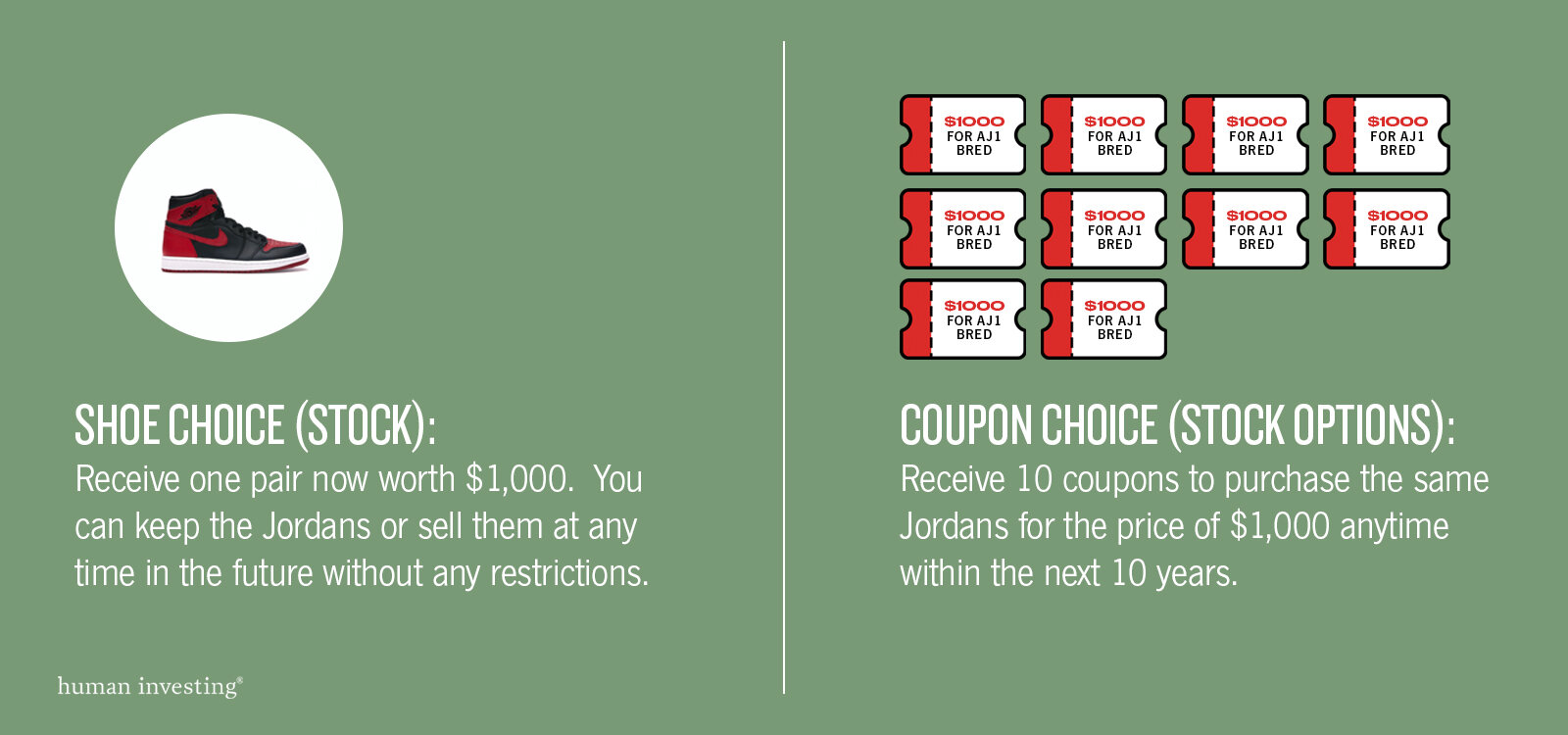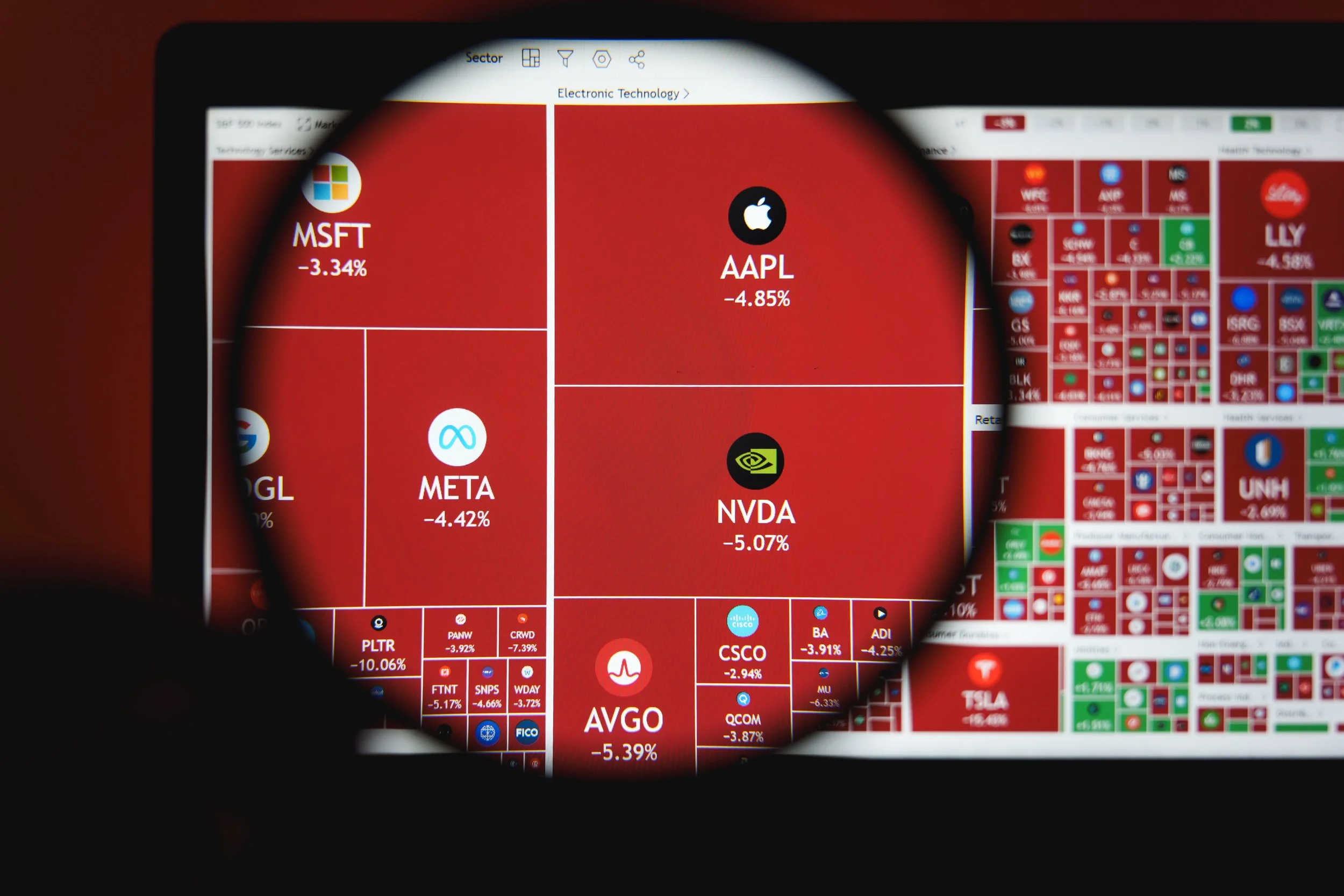How to Maximize your Nike Stock Options
For many years, Stock Options have been a foundational part of compensation for Nike leaders. They have provided a unique opportunity to build significant wealth by participating in the success of Nike. While Stock Options can have a great impact on your financial landscape, they can also create considerable confusion. In our experience working with Nike leaders, we have found that there are often misunderstandings about Stock Options and how they differ from actual shares of Nike stock. While we are responsible for the financial planning intricacies for our Nike clients, we wanted to provide a background on Stock Options and share the most important factors to fully maximize them.
What are Nike Stock Options and how do they work?
Nike Stock options are the right to purchase shares of Nike at a set price (exercise or strike price) that lasts for up to 10 years. I like to think of them as “coupons”, where you can use your coupon to buy an item for a price that is lower than it is currently worth. Once you have used your coupon, you could proceed to immediately sell that item for the current price, capitalizing on the difference between the coupon price and the current market value.
Value of Stock Option = # of Options x (Current Stock Price - Exercise Price
To illustrate the difference between stock and Stock Options, it only seemed appropriate to use a shoe analogy. Imagine you are given access to Limited Release Jordan shoes, and you have two different choices to select from:
So which choice is better for you? It depends on what happens to the value of those Jordans in the future. Will the value increase or decrease and by how much? Do you need another pair of Jordans today? Or can you wait until the future to use them? To better understand how it can all play out, we put the 2 Choices against each other in three head-to-head matchups to determine the winner in each situation.
ROUND #1: Value of SHOES drops -10% to $900.
Shoe Choice: you are still left with shoes that you could sell for $900 or keep if you think the value could recover and grow further.
Coupon Choice: your 10 coupons are worthless since there is no value in purchasing shoes for more than they are worth at $1,000 per pair.
WINNER: Shoe Choice
ROUND #2: Value of shoes increases +10% to $1,100
Shoe Choice: your shoes are now worth $1,100 and the value has increased by $100. You can sell them or keep them if you think the value could continue to increase further.
Coupon Choice: your coupons would allow you to purchase 10 pairs of shoes for $10,000 (10 coupons x $1,000 per pair). You could them resell them for $11,000 (10 pairs x $1,100 per pair) and earn a profit of $1,000 ($11,000 value - $10,000 purchase cost).
WINNER: Shoe Choice
ROUND #3: Value of the shoes increases +50% to $1,500
Shoe Choice: your shoes are now worth $1,500 and the value has increased by $500. You can sell them or keep them if you think the value could continue to increase further.
Coupon Choice: your coupons would allow you to purchase 10 pairs of shoes for $10,000 (10 coupons x $100 per pair). You could them resell them for $15,000 (10 pairs x $1,500 per pair) and earn a profit of $5,000 ($15,000 value - $10,000 purchase cost).
WINNER: Coupon Choice
THE POST MATCH ANALYSIS
Round #1: Shoe Choice (Nike Stock) won and underscores the risk of Stock Options and how the value can become $0 if the stock price does not increase.
Round #2: Shoe Choice (Nike Stock) won but only by a small amount. Even if the stock grows, low growth still favors Nike Stock over Stock Options. This is common if Stock Options are held for a short period of time.
Round #3: Coupon Choice (Stock Options) won by a significant amount. Substantial growth in Nike stock will favor Stock Options by a wide margin.
UNDERSTANDING THE OPPORTUNITY AND RISK
The Shoe & Coupon Choices shows how the Stock Options can perform from the beginning, but what about Stock Options that you already own and have existing value? At Human Investing, we created a Stock Option Volatility Analysis to show what the upside and downside volatility can be like for existing Stock Options.
If you examine the outlined bars, you will note that a 15% increase in Nike Stock price would result in a 101% increase in the value of that Stock Option. At the same time, a 15% decrease would drop this Stock Option value by -101%. The owner of Nike Stock Options should be prepared and ready to experience significant short-term declines like the ones shown in the chart above.
The key to capturing the upside potential of Nike Stock Options is having a long enough time horizon. Stock prices can quickly move up and down in the short-term but have a history of growth over the long-term (10+ years). If you own Stock Options and can wait long enough before you exercise and sell them, that will give you the best probability of maximizing the value.
WHAT HAPPENS WHEN YOU LEAVE NIKE?
Since a longer time horizon is one of the most important components for success with Stock Options, what can disrupt that opportunity?
If you leave (voluntarily or involuntarily) Nike, you typically have up to 90 days to exercise your vested stock options and all unvested stock options are forfeited. While it is uncommon, there have been some exceptions where the 90-day time period is extended.
In addition, if you meet specific “retirement” criteria, you can receive more favorable vesting for your unvested options. There are two “retirement” benefits that are unique to Nike stock options:
1) Early Retirement: Age 55-59 with 5 years of Service
Unvested Stock Options (less than one year prior to separation) will be forfeited.
All other unvested Stock Options will continue per the original vesting schedule.
After your retirement date, you will have up to 4 years to exercise your options.
2) Normal Retirement: Age 60+ with 5 years of Service
Unvested Stock Options (less than one year prior to separation) will be forfeited.
All other unvested Stock Options will become fully vested as of the retirement date.
After your retirement date, you will have up to 4 years to exercise your options.
The special retirement vesting options described above can be an extremely valuable benefit to plan for and take advantage of if you are close to or at age 55+.
HOW ARE STOCK OPTIONS TAXED?
As Stock Options vest and grow in value, there is no tax along the way. Tax is only recognized when you exercise your options. The dollars are taxed in the same way as your salary, at ordinary income tax rates, which can be as high as 55.45% since it includes federal, state, Social Security, and Medicare taxes. This can push you into a higher income tax bracket and often disrupts your tax liability if not adequately planned for throughout the year.
TAX & PLANNING STRATEGIES
Strategy #1 – Spread Option Exercises Over Multiple Years
Since exercising Stock Options creates additional taxable income, carefully exercising the right amount and dividing it over more than one year can help you lower your overall taxes.
For example, assume you have taxable income is $450,000 and have $350,000 of Stock Options that you want to exercise. Your current income of $450,000 would be in the 35% tax bracket (2021) and you will not move up to the 37% tax bracket until your income exceeds $628,301 (2021). That leaves room for $178,301 worth of stock exercises that would be taxed at 35% before it reaches the 37% bracket. If you spread the $350,000 of exercises over two years ($175,000 per year) instead of exercising the entire amount in one year, you could avoid the 37% bracket and save about $3,500 in Federal taxes.
Strategy #2 – Coordinate Option Exercises with the Nike Deferred Compensation Plan
Another strategy is to coordinate the timing of your Stock Option exercise with the contribution of a similar amount of salary and/or bonus into the Nike Deferred Compensation plan. This strategy requires the following steps:
Step 1: Determine the amount of Stock Options you wish to exercise. As an example, we picked $300,000 of stock options to exercise.
Step 2: Elect to defer the same amount ($300,000) into the Nike Deferred Compensation plan from your salary during Open Enrollment.
Step 3: Exercise and sell $300,000 of Stock Options in the same tax year as you are contributing $300,000 to the Nike Deferred Compensation Plan
Step 4: Use the proceeds from the $300,000 of Stock Option exercises to replace your salary and support your living needs.
In the end, you would have essentially funneled your Stock Option proceeds into the Deferred Compensation plan and avoided paying any additional taxes.
Learn more about the Nike Deferred Compensation Plan.
Nike stock options are an incredible opportunity
Although Nike Stock Options are often misunderstood, they can provide an incredible opportunity to generate wealth. To really maximize of the opportunity, we recommend that you are prepared to navigate the volatility, complexities, and tax strategy.
If you have any questions or want to know more about how to handle your Nike Stock Options, please get in touch.
You can schedule time with me on Calendly below, e-mail me at marc@humanvesting.com, or call or text me at (503) 608-2968.













